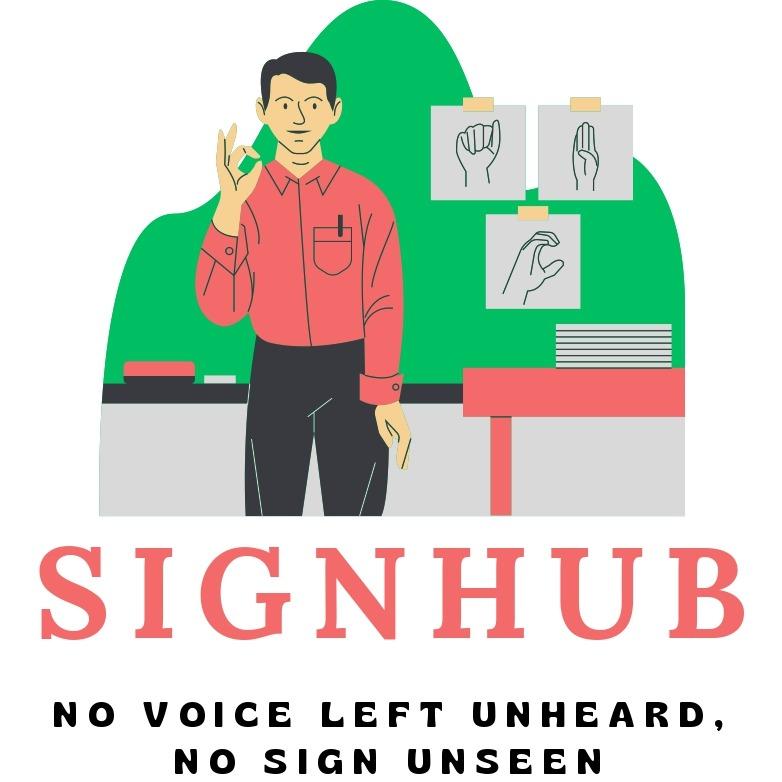SignHub
No voice left unheard, no sign unseen Description: We seek to highlight the project's inclusivity and empowerment while also emphasizing the role that technology plays in facilitating dialogue.
Created on 6th March 2023
•
SignHub
No voice left unheard, no sign unseen Description: We seek to highlight the project's inclusivity and empowerment while also emphasizing the role that technology plays in facilitating dialogue.
The problem SignHub solves
The objective of this research is to create a system that can accurately translate spoken language into sign language in real time. By offering a more open and inclusive communication tool, the system should be created to support the deaf and hard-of-hearing community. Our system would be able to process a variety of spoken inputs, including slang, technical terms, and conversational speech. Additionally, it should be able to manage various accents and dialects and, over time, adjust to the unique speech patterns of each user. Apart from this, the system needs to be capable of producing expressive sign language that faithfully reproduces the intricacies of spoken language. It should be developed to work with different sign language dialects and geographical variations in order to guarantee accuracy and cultural sensitivity. It should incorporate suggestions from professionals in sign language. With the least amount of delay possible between speech input and sign language output, the system should be able to work in real-time. Additionally, it must be able to scale to meet rising demand and support numerous concurrent users. Lastly, The system should be made accessible to users and simple to operate, with an easy-to-navigate user interface. It should also be able to work in conjunction with other assistive technology, such text-to-speech software, and captioning tools, to give the deaf and hard-of-hearing people a more comprehensive communication option.
Challenges we ran into
Some of the difficulties we believe we may confront
Sign language varies greatly depending on place and culture. As a result, developing a single model that is capable of successfully understanding and translating diverse sign languages might be difficult.
Sign language is a complicated language that relies on facial emotions and body gestures in addition to hand movements. Capturing these minor differences in sign language necessitates the use of a highly complex model capable of effectively recognizing and translating them.
The acceptance and adoption of users are critical to the success of any Speech to Sign Language Conversion project. Designing a user-friendly interface that is accessible to both hearing and deaf people can be challenging.
Technologies used
